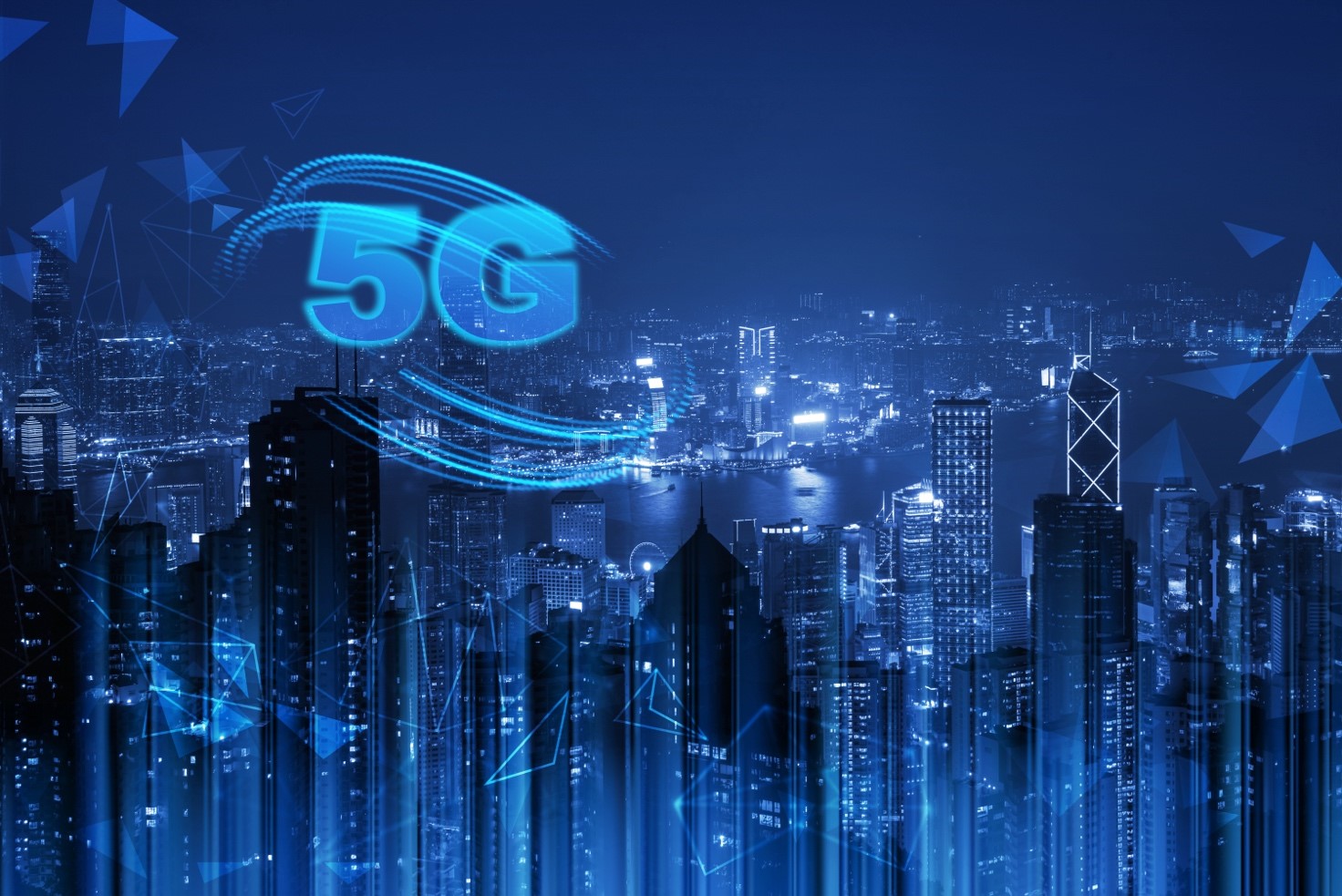The concept of a Smart City represents an ideal environment for enhancing the accessibility and efficiency of traditional networks and services resorting to digital technologies. Smart City is not only this: when we think about smart cities, we mean urban contexts which transcend conventional boundaries shaping urban environments into healthier, safer and modern spaces supporting both citizens and companies’ needs encompassing daily life, work, participation in social and community life, and relationships with public administration.
The core of Smart Cities is the smarter way in managing available resources to become economically sustainable, energetically self-sufficient, and careful to people’s quality of life. From a technological point of view, a smart city is characterized by a great presence of infrastructures and networks for 5G mobile connectivity, Wi-Fi, cloud computing, broadband fixed networks, smart grids, connected multimodal transport networks, water networks, and public lighting. Furthermore, it has sensors’ networks and IoT devices encompassing smart devices, connected sensors, smart cars, smart bikes, and smartphones. It is both about networks which constantly generate data – that are processed and analyzed through big data analytics software – and processing open data using machine learning and artificial intelligence.
Finally, a Smart City is characterized by mobile and web applications able to provide citizens with high quality services. This model of Smart City we make us able to better understand how important it is in Western societies where, alongside the urbanization, there is a growing sensitivity towards environmental and sustainability issues.
 Italian landscape: gap between Northern and Southern regions
Italian landscape: gap between Northern and Southern regions
In Italy, there is a huge gap between northern and southern regions: based on the latest report and rankings produced by ICity Rank 2023, the most developed Italian cities from an infrastructural point of view, are Bergamo, Florence, Milan and Modena. The absence of Southern cities also emerges when extending the ranking to the top ten positions, like Bologna, Genoa, Turin, Trento, Venice, Cremona, Padoa, Rome, Monza, Parma and Vicenza which, along with the others above-mentioned, represent the most digital Italian cities. Nonetheless, Cagliari is listed in the ranking: based on the report from last year, the assessment of the city was structured into three dimensions (considering 37 indicators and 171 variables) leading to different characteristics:
- “Digital administrations” dimension, which is about digitalizing administrative jobs and tasks, like websites, online services, national platforms
- “Open municipalities” dimension, which is about analysing how often people use social media;
- “Interconnected cities” dimension, which is about assessing the digital transformation’s impact on city governance, involving the development of networks, sensor systems and connectable devices, as well as tools for processing information flows and data analysis.”
Based on the different ratings more than half of provincial capital municipalities are digital. In addition to the 16 highly digital cities, we can find other 17 cities at intermediate level: Bari, Cesena, Perugia, Reggio Emilia, Brescia, Livorno, Lodi, Naples, Palermo, Pescara, Pisa, Pistoia, Prato, Ravenna, Rimini, Siena, Verona. Another 26 cities show a “basic” digital level: Alessandria, Andria, Aosta, Arezzo, Asti, Bolzano, Catania, Cuneo, Ferrara, Imperia, La Spezia, Lecce, Mantua, Massa, Messina, Novara, Nuoro, Pavia, Piacenza, Reggio Calabria, Rovigo, Taranto, Treviso, Trieste, Udine, Verbania. There are also 29 municipalities still in the process of being digitalized, while 20 are facing a “digital delay.” Among these, Agrigento, Enna, and Isernia stand out, being the only ones with two out of three low-level scores.
Most of the main cities have embraced the digital transformation (high-medium and low level): Florence and Milan, confirmed at the top of the raking, but also Bologna, Genoa, Turin and Venice. Soon after these cities, we can find a small group of the so-called “innovative” cities, like Trento, Cremona, Padova, Monza, Parma e Vicenza which are as much digital as Bergamo and Modena. Immediately after, we find Cesena, Perugia, Reggio Emilia, Brescia, Livorno, Lodi, Pescara, Pisa, Pistoia, Prato, Ravenna, Rimini, Siena e Verona along with 23 regional county seats. Last, but not least, we find Cosenza, Frosinone, Sassari, Siracusa e Varese which, even if not highly digitalized, are experiencing a significant development.
Cagliari is the only southern Italian city highly developed while Bari, even if in the top ten list of Interconnected Cities, is on intermediate level like Naples and Palermo. Some other cities, like Catania, Messina, and Reggio Calabria, in the lowest ranking positions, have made significant digital progresses. In addition to the five country seats, southern cities and Pescara are among the digital cities of the South of Italy, being considered as the intermediate ones and the first non-metropolitan capitals. Andria, Lecce, Nuoro, and Taranto also go beyond the threshold. Although not yet classified as digital cities, Cosenza, Sassari, and Siracusa show notable progress in specific indicators. Concerning Digital administrations, Cremona is confirmed on top of the list, followed by Siena, Florence and Pistoia, Lodi, Perugia, Bergamo, Cesena, Milan and Modena. There are 41 cities beyond the two-thirds threshold in the rating, and among these, 5 only are from the South (Pescara, Andria, Cagliari, Nuoro, and Taranto).
The digitalization process of administrative jobs, started 10 years ago and involving some country seats, made both southern and northern Italian cities, like Bergamo, Modena, Parma and Trento, more innovative. The process itself has been supported by National Agencies and by the consolidation of “reference models”. As a result of the National Recovery and Resilience Plan, further progress is expected.
In the Open Cities index, Florence leads the ranking, followed by Turin, Bologna, Milan and Rome, Bergamo, Genoa, Reggio Emilia, and Trento (tied for eighth place), Modena and Venice (tied for tenth place). 31 cities exceed the “threshold” of two-thirds in the rating, and among these, 7 only are in the South of Italy (Palermo, Lecce, Bari, Cagliari, Messina, Naples, and Catania).
Big cities are more digitalized and innovative compared to the mid-sized ones. It is likely that in the years to come a uniform model on how to use digital technology would be consolidated. Experiences are diverse in terms of characteristics and outcomes, and metropolitan cities are pioneering innovation. On top of interconnected cities, we find Bologna followed by Milan and Cagliari. Immediately after, we find Florence, Venice, Padoa and Turin, Trento, Bergamo, Bari, Genoa and Modena. 33 cities exceed the “threshold” of two-thirds in the rating and 6 of them only are from the South (Palermo, Naples, Pescara and Reggio Calabria).
Almost 50% of Italian municipalities are paving the way towards smart cities
Over the years, the concept of smart cities has gained a significant impact in science and policy, thus increasing projects in the field. According to a survey conducted by Politecnico di Milano, in 2019, only 42% of municipalities with more than 15.000 inhabitants had resorted to a Smart City project in the previous three years: figures that increased by 6% compared to the situation in 2018. More specifically, 31% had implemented 1 or 2 projects and only 1% had implemented a significant number of projects. 58% of municipalities, with more that 15.000 inhabitants, hadn’t implemented any kind of Smart City project. Soon after the COVID-19 pandemic, the idea of city completely changed.
The digital transformation, the implementation of smart working policy in several companies, the attention to a more sustainable environment and to monetizing circular economy have strongly boosted the concept of Smart City. According to a survey on Italian municipalities conducted by the Internet of Things Observatory of Politecnico di Milano between 2020-2021, in municipalities with less than 15.000 inhabitants, 42% of administrators consider the Smart City of fundamental importance. Meanwhile, for cities having more than 15.000 inhabitants, the Smart City is a fundamental or very relevant topic for 80% of respondents. The ongoing rise in market value underscores the significant focus from Italian administrators and large corporations. Compared to the 2012-2014 scenario, with 2/3% of IoT market value, over the last years there’s been a notable growth which might reach 1 billion euros by next year.
Which is the value of Smart Cities’ Italian market?
A study by Unicusano, attributing a value of 900 million euros to Smart Cities’ market – which will keep increasing in the next few years – better defines the size of this market and its growth prospects. Thanks to the National Recovery and Resilience Plan, 17 billion euros will be allocated to help Italy develop Smart Cties’ projects: 5.3 billion euros will be allocated to urban regeneration and housing quality, 2 billion to digital services for citizens, 8.6 billion to ecological transition, and 1 billion to safer roads. The regeneration of urban fabrics will encompass mobility and environmental sustainability, culture and water supply, healthcare, and waste disposal, as well as tourism, social well-being, and the broader concept of governance. Top of FormThis new model will also impact the job market: by 2029 almost 2.5 million jobs will be implemented in the smart cities resulting in an economic growth (with more than 350 thousand experts in the field of network infrastructures) and in the development of new sensors, digital platforms, mobile and web applications.
 National Recovery and Resilience Plan: the crucial turning point for Italian cities
National Recovery and Resilience Plan: the crucial turning point for Italian cities
The National Recovery and Resilience Plan represents a decisive turning point to help Italian cities become eco-friendlier and more innovative. The main goals set by Italian Government aim at reshaping urban and extra urban environments in terms of infrastructures and mobility; improving citizens’ quality of life, and promoting their participation to social and entrepreneurial life. Furthermore, these projects aim to define urban planning, with social and cultural activities, urban development, in terms of economic growth, and urban identity of inhabitants. The greatest amount of resources (addressed to people living in a specific city and to the most vulnerable) will be addressed to Naples (351 million euros), followed by Rome (330 million), Milan, (277 million euros), Turin (234 million euros), Palermo (196 million euros), Catania (186 million euros), Bari (182 million euros), Florence (157 million euros), Bologna (157 million euros), Genoa (141 million euros), Venice (140 million euros), Messina (132 million euros), Reggio Calabria (119 million euros), and Cagliari (101 million euros).
Projects subject to funding concern investments aimed at improving degraded urban areas, at fostering economic growth by creating new services and improving infrastructures, letting vulnerable territories turn into smart and sustainable cities.
 5G innovation potential at global level
5G innovation potential at global level
The smart cities revolution has been embraced by many countries worldwide, notably western, and Anglo-Saxon countries, being the main topic public opinion and politics have been focused on. Analysts and experts expect a significant spread of this trend also in the Middle East and the U.S. with several countries investing lots of money to implement the Smart Cities model. According to a study provided by Omdia, digital applications developed for the Smart Cities are proliferating on global scale (like CCTVs, smart lighting and so on): based on these figures, smart cities now have 399 million digital software compared to the 117 million in 2018. By the end of 2025, more than 500 million devices – including smart lighting, smart parking, connected surveillance cameras, and other devices for public transportation, waste and environmental sustainability, will be further implemented.
North American, European, and Asian countries have been leading this market so far; nonetheless, in the years to come, the spread of these devices and associated applications will mainly occur in Asia. This is due to the great presence of megalopolis and the high percentage of inhabitants: therefore, urban energy and environmental issues are very prominent resulting in a significant need of Smart Cities. Moreover, the number of developing urban centers and high level of construction industries, make Asian countries the perfect environment to developing and distributing these devices and applications (it is always easier and faster to implement these solutions in greenfield areas than in cities with preexisting buildings and sites, something which notably occurs in Europe and United States). Lastly, the increased investments in Asian 5G TLC networks will ease the transition to the new technologies. According to Markets and Markets, in terms of goods and services provided to citizens, like connectivity ones, the market value doubled between 2016 and 2021 and it is likely to further increase, hence reaching 1.000 billion dollars by 2027.
 Final thoughts
Final thoughts
The growing number of available resources used for Smart Cities will for sure play a vital role in social, economic, and political scenarios. A digital revolution is likely to spread in the next years making urban cities more sustainable and eco-friendlier. 5G, Smart Grid, Cloud technologies along with innovative infrastructures and analyzed data will play a pivotal role. Even though there’s still a gap between Italy’s Northern and Southern regions, our country is rapidly progressing. Last, but not least, the available resources from the National Recovery and Resilience Plan will help bridge this gap and will help Italy become a high tech country able to keep pace with others.





